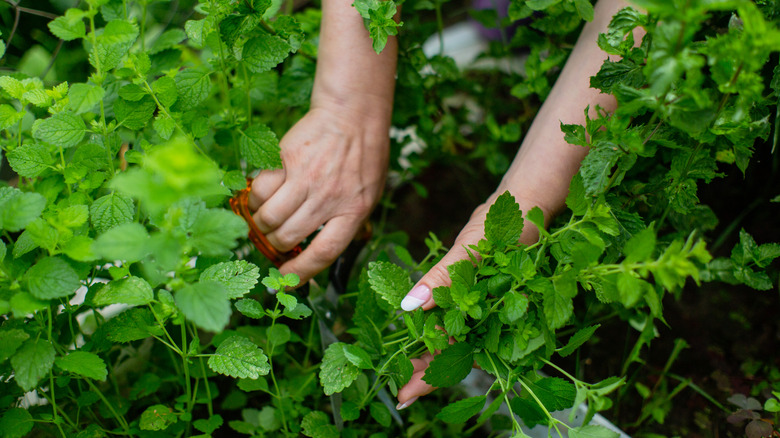Mint isn’t just useful in the kitchen. This unexpected herb is a mosquito-fighting secret weapon. You can use it to make a natural pesticide spray for your plants. Even planting it in the garden will help repel pests — both exoskeletal and fur-covered. In other words, growing mint is a DIYer’s dream. But you can’t make any of these things if your mint doesn’t last the winter. To make sure it does, you need to give it a somewhat aggressive haircut and a cozy layer of mulch before the first frost. If you live in a frigid climate, consider bringing your plant (or plants) inside to ensure they survive until spring.
There are dozens of varieties and cultivars of the Mentha (mint) species. In the U.S., people typically grow just a fraction in their garden: from common culinary spearmint (Mentha spicata) to the gardener’s favorite, apple mint (mentha suaveolens), to the highly toxic pennyroyal (Mentha pulegium), often used as a groundcover plant in landscaping. Most plants grow to a maximum height of 1 meter — usually far shorter. Like many herbs, mints are hardy herbaceous perennials. They survive winters in USDA Hardiness Zone 3 to 8 (with temperatures as low as 5 degrees Fahrenheit) by dying back — going dormant — and directing energy underground to their roots. As long as they’re well cared for by their gardener, they’ll resprout in the spring.
Leave it out

Just before the first frost is expected in your area, harvest all the edible leaves from your plant, then take your scissors, garden shears, or, for large shrubs, electric hedge trimmers and chop the stems of your mint plant to the ground. Be aggressive! Your mint will thank you for it come spring. Next, cover your plant with mulch, twigs, leaves, or even an old bedsheet will do. If you’re expecting a lot of snow or deep freezes, wrap pots in garden fleece or bubble wrap or top them with planks of wood.
Alternatively, relocate the planters to a sheltered, windless spot — beside walls, in a cold frame, or the doorway of your garden shed. Karen Gibson, Master Garden and founder of the blog Sprouted Garden, goes a step further, wrapping her potted mint plants with old sheets, popping them in a plastic storage container, and overwintering them in her unheated garage. Another reason to overwinter your mint indoors is if it’s planted in an attractive ceramic pot. Clay often cracks through successive freezes and thaws. Keep your plant in a warm, bright spot inside (like a sunny kitchen windowsill), and you might even be able to harvest fresh mint throughout the cold season!
Make more
When trimming your plant, you may notice runners, also called stolons. These hefty roots help the mint colonize new areas, even taking over your garden without careful observation. Planters of mint quickly get overcrowded with stolons. Pull up the excess, chop them into 1 to 2-inch pieces, and plant them in sprouting trays. Place these trays in a sheltered spot in your garden, a greenhouse, or even a sunny windowsill inside. Give each tray about a cup of water once a month for the duration of winter — the same goes for your cut-back mature plants. As the weather warms, they’ll sprout, and you’ll have mint seedlings for your spring garden.
Check your overwintering mint plants regularly for waterlogging. If the soil in your outdoor plants feels soggy or is starting to grow mold or moss, or if you experience a lot of rain or melted snow through the winter, place risers under the planters. This keeps the roots from rotting. Mint rarely gets affected by diseases, though one to watch out for in winter is mint rust — scientifically named Puccinia menthae. The spores of this dastardly plant fungus shelter from the cold of the season in the soil and roots of your mint plants, slowly infecting them. Come spring, you’ll see the signs clearly, including orange, brown, or black spots on the leaves and warped stems. Regularly inspect all your plants, whether cuttings or mature, for signs of rust. Discard infected plants and the soil they’re growing in.